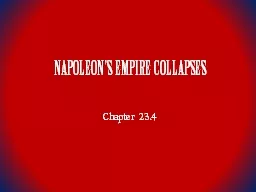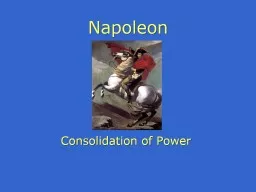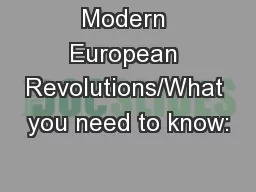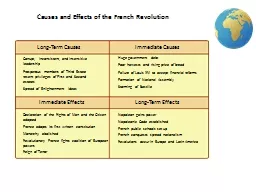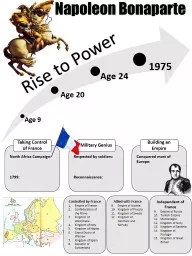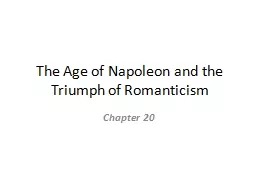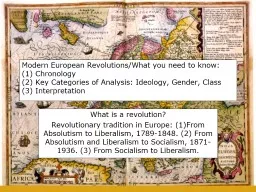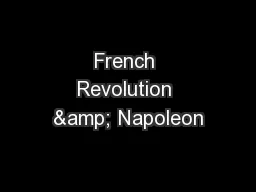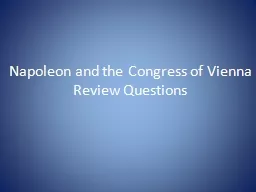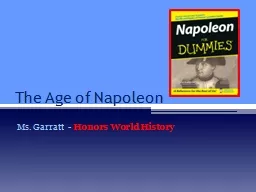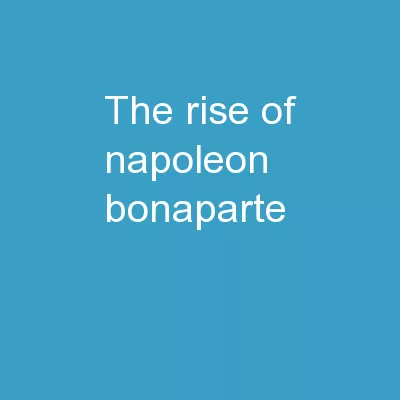PPT-Napoleon and the Spread of Revolutions
Author : karlyn-bohler | Published Date : 2018-01-18
Lets finish Chapter TwentyThree Reaction and the Rise of Napoleon With Robespierre gone radical reforms undone A brilliant young general seizes power Napoleon Bonaparte
Presentation Embed Code
Download Presentation
Download Presentation The PPT/PDF document "Napoleon and the Spread of Revolutions" is the property of its rightful owner. Permission is granted to download and print the materials on this website for personal, non-commercial use only, and to display it on your personal computer provided you do not modify the materials and that you retain all copyright notices contained in the materials. By downloading content from our website, you accept the terms of this agreement.
Napoleon and the Spread of Revolutions: Transcript
Download Rules Of Document
"Napoleon and the Spread of Revolutions"The content belongs to its owner. You may download and print it for personal use, without modification, and keep all copyright notices. By downloading, you agree to these terms.
Related Documents


